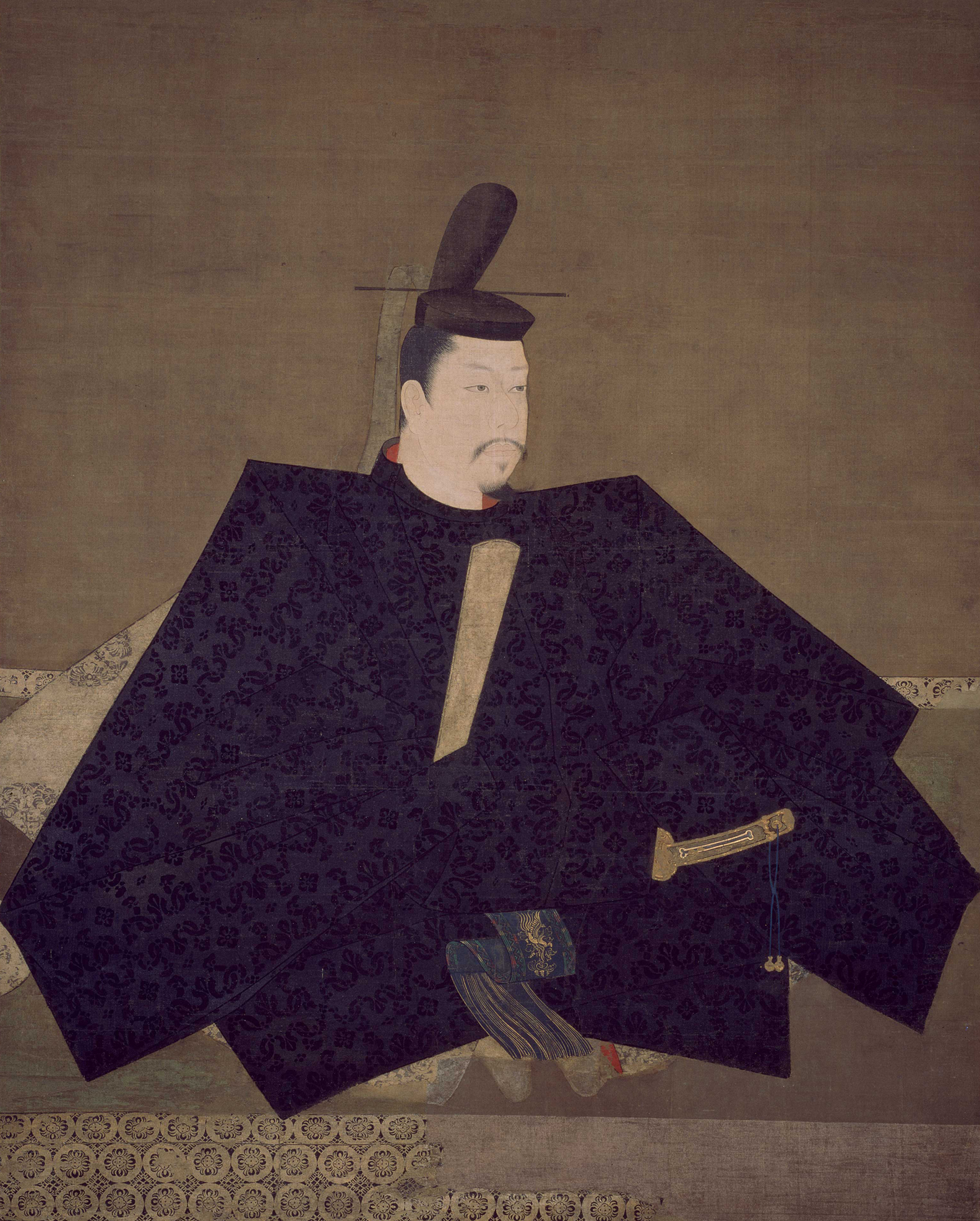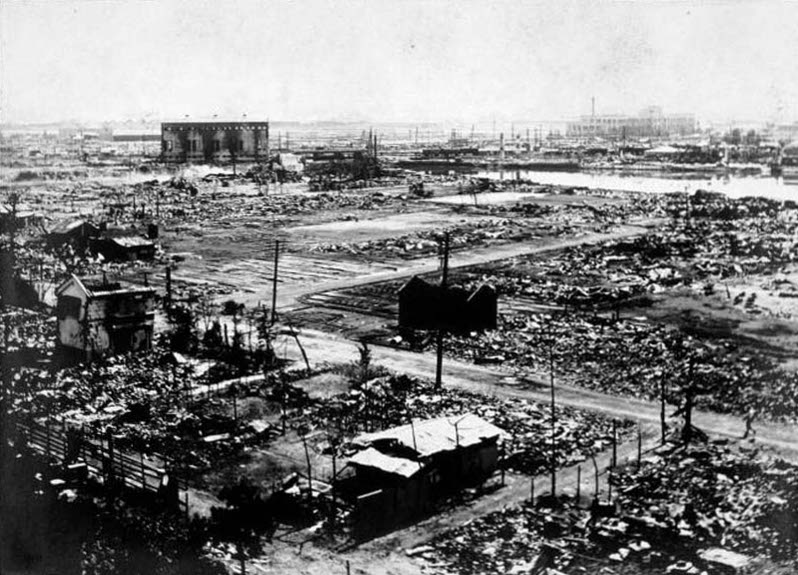|
Eishō-ji
Eisho-ji (英勝寺) is a Jōdo-shū temple in Ogigayatsu, Kamakura, Kanagawa, Japan, and is the sole nunnery in Kamakura. The mountain name is Tokozan. Okaji no Kata, a concubine of Tokugawa Ieyasu, took the name Eishoin after her pabbajja and founded the temple. The temple is thought to be located at the site of the residence of Ōta Dōkan, who was ancestor of the architect of Edo castle. Okaji no Kata bore Ieyasu a daughter, Ichihime, but she died very young. After Ichihime's death, Ieyasu ordered Okaji no Kata to become the adoptive mother of Tokugawa Yorifusa, who later reigned over Mito Domain. The founding priestess Gyokuhōseiinni was a daughter of Yorifusa. From its foundation, princesses of Mito Domain regularly became priestesses of Eisho-ji. Thus people called the temple "Mito palace" or "Nunnery of Mito". After the Meiji Restoration, the practice of obtaining priestesses from the Mito Domain was discontinued and influence of the temple waned. During the 1923 Great K ... [...More Info...] [...Related Items...] OR: [Wikipedia] [Google] [Baidu] |
Okaji No Kata
(December 7, 1578September 17, 1642) or Lady Okaji, was a Japanese noble lady and aristocrat who lived during the Sengoku period and at the beginning of Edo period. She was the founder of Eishō-ji temple in Kamakura and was also a concubine of Tokugawa Ieyasu. She was maybe from the Ōta clan. Her other names are Ohachi no Kata (お八の方) and Okatsu no Kata (お勝の方). Biography Okaji no kata was of relatively unknown origin. She was either Ōta Yasusuke's adopted daughter, Tōyama Naokage's daughter, or Edo Shigemichi's daughter. There are also tales that say she shared a brother-sister relationship with Dōkan. Various theories state that she could have been Tōyama Tsunakage's daughter or youngest sister. Many people believe that Ieyasu met Okaji around the time he first settled in Edo. Due to her status as his concubine, her age when they met is not recorded but some historians postulate that she could have been in her early teens. The two met due to her ol ... [...More Info...] [...Related Items...] OR: [Wikipedia] [Google] [Baidu] |
Ōta Dōkan
, also known as Ōta Sukenaga (太田 資長), was a Japanese samurai lord, poet and Buddhist monk. He took the tonsure as a Buddhist priest in 1478, and he also adopted the Buddhist name, Dōkan, by which he is known today.Time Out Magazine, Ltd. (2005 ''Time Out Tokyo,'' p. 11./ref> Dōkan is best known as the architect and builder of Edo Castle (now the Imperial Palace) in what is today modern Tokyo; and he is considered the founder of the castle town which grew up around that Ōnin era fortress. Ōta clan genealogy The Ōta clan originated in 15th-century Musashi Province.Appert, Georges ''et al.'' (1888) ''Ancien Japon'', p. 76./ref> They claimed descent from Minamoto no Yorimasa, and through that branch of the Minamoto they claimed kinship with the Seiwa-Genji. Papinot, Edmond. (2003)''Nobiliare du Japon'' -- Ōta, pp. 48 Papinot, Jacques Edmond Joseph. (1906). ''Dictionnaire d'histoire et de géographie du Japon''; retrieved 2012-11-7. The feudal progenitor of the c ... [...More Info...] [...Related Items...] OR: [Wikipedia] [Google] [Baidu] |
Honden
In Shinto shrine architecture, the , also called , or sometimes as in Ise Shrine's case, is the most sacred building at a Shinto shrine, intended purely for the use of the enshrined ''kami'', usually symbolized by a mirror or sometimes by a statue.JAANUS The building is normally in the rear of the shrine and closed to the general public. In front of it usually stands the ''Haiden (Shinto), haiden'', or Oratory (worship), oratory. The ''haiden'' is often connected to the ''honden'' by a ''Heiden (Shinto), heiden'', or hall of offerings. Physically, the ''honden'' is the heart of the shrine complex, connected to the rest of the shrine but usually raised above it, and protected from public access by a fence called ''tamagaki''. It usually is relatively small and with a gabled roof. Its doors are usually kept closed, except at matsuri, religious festivals. Kannushi, Shinto priests themselves enter only to perform rituals. The rite of opening those doors is itself an important part o ... [...More Info...] [...Related Items...] OR: [Wikipedia] [Google] [Baidu] |
Jōdo-shū
Jōdo-shū (浄土宗, "The Pure Land School"), is a Japanese branch of Pure Land Buddhism derived from the teachings of the Kamakura era monk Hōnen (1133–1212). The school is traditionally considered as having been established in 1175 and is the most widely practiced branch of Buddhism in Japan, along with Jōdo Shinshū. There are various branches of Jōdo-shū, which the largest and most influential ones being Chinzei-ha and Seizan-ha. Jōdo-shū Buddhism focuses exclusively on devotion to Amitābha Buddha (Amida Nyorai), and its practice is focused on the Nembutsu (recitation of Amitābha’s name). As in other forms of Pure Land Buddhism, adherents believe that the faithful recitation of the phrase " Namu Amida Butsu" (Homage to Amida Buddha) results in birth in the pure land of Sukhavati. The Jōdo-shū as an independent sect is not to be confused with the term "Jōdo Tradition" (Jōdo-kei, 浄土系) which is used as a classification for "Japanese Pure Land Buddhi ... [...More Info...] [...Related Items...] OR: [Wikipedia] [Google] [Baidu] |
Kamakura, Kanagawa
, officially , is a Cities of Japan, city of Kanagawa Prefecture in Japan. It is located in the Kanto region on the island of Honshu. The city has an estimated population of 172,929 (1 September 2020) and a population density of 4,359 people per km2 over the total area of . Kamakura was designated as a city on 3 November 1939. Kamakura was Japan's ''de facto'' capital when it was the seat of the Kamakura shogunate from 1185 to 1333, established by Minamoto no Yoritomo. It was the first military government in Japan's history. After the downfall of the shogunate, Kamakura saw a temporary decline. However, during the Edo period, it regained popularity as a tourist destination among the townspeople of Edo (Tokyo), Edo. Despite suffering significant losses of historical and cultural assets due to the 1923 Great Kantō earthquake, Great Kantō Earthquake in 1923, Kamakura continues to be one of the major tourist attractions in the Kanto region, known for its historical landmarks such as ... [...More Info...] [...Related Items...] OR: [Wikipedia] [Google] [Baidu] |
Tokugawa Ieyasu
Tokugawa Ieyasu (born Matsudaira Takechiyo; 31 January 1543 – 1 June 1616) was the founder and first ''shōgun'' of the Tokugawa shogunate of Japan, which ruled from 1603 until the Meiji Restoration in 1868. He was the third of the three "Great Unifiers" of Japan, along with his former lord Oda Nobunaga, Oda Nobunaga and fellow Oda clan, Oda subordinate Toyotomi Hideyoshi. The son of a minor daimyo, Ieyasu once lived as a hostage under daimyo Imagawa Yoshimoto on behalf of his father. He later succeeded as daimyo after his father's death, serving as ally, vassal, and general of the Oda clan, and building up his strength under Oda Nobunaga. After Oda Nobunaga's death, Ieyasu was briefly a rival of Toyotomi Hideyoshi, before declaring his allegiance to Toyotomi and fighting on his behalf. Under Toyotomi, Ieyasu was relocated to the Kantō region, Kanto plains in eastern Japan, away from the Toyotomi power base in Osaka. He built Edo Castle, his castle in the fishing village of ... [...More Info...] [...Related Items...] OR: [Wikipedia] [Google] [Baidu] |
Mito Domain
was a Japanese domain of the Edo period. It was associated with Hitachi Province in modern-day Ibaraki Prefecture."Hitachi Province" at JapaneseCastleExplorer.com retrieved 2013-5-15. In the , Mito was a and abstraction based on periodic surveys and projected agricultural yield ... [...More Info...] [...Related Items...] OR: [Wikipedia] [Google] [Baidu] |
Meiji Restoration
The , referred to at the time as the , and also known as the Meiji Renovation, Revolution, Regeneration, Reform, or Renewal, was a political event that restored Imperial House of Japan, imperial rule to Japan in 1868 under Emperor Meiji. Although there were ruling emperors before the Meiji Restoration, the events restored practical power to, and consolidated the political system under, the Emperor of Japan. The Restoration led to enormous changes in Japan's political and social structure and spanned both the late Edo period (often called the Bakumatsu) and the beginning of the Meiji era, during which time Japan rapidly Industrialization, industrialised and adopted Western culture, Western ideas and production methods. The origins of the Restoration lay in economic and political difficulties faced by the Tokugawa shogunate. These problems were compounded by the encroachment of foreign powers in the region which challenged the Tokugawa policy of , specifically the arrival of the Pe ... [...More Info...] [...Related Items...] OR: [Wikipedia] [Google] [Baidu] |
1923 Great Kantō Earthquake
The 1923 Great Kantō earthquake (, or ) was a major earthquake that struck the Kantō Plain on the main Japanese island of Honshu at 11:58:32 JST (02:58:32 UTC) on Saturday, 1 September 1923. It had an approximate magnitude of 8.0 on the moment magnitude scale (Mw), with its epicenter located southwest of the capital Tokyo. The earthquake devastated Tokyo, the port city of Yokohama, and surrounding prefectures of Kanagawa, Chiba, and Shizuoka, and caused widespread damage throughout the Kantō region. Fires, exacerbated by strong winds from a nearby typhoon, spread rapidly through the densely populated urban areas, accounting for the majority of the devastation and casualties. The death toll is estimated to have been between 105,000 and 142,000 people, including tens of thousands who went missing and were presumed dead. Over half of Tokyo and nearly all of Yokohama were destroyed, leaving approximately 2.5 million people homeless. The disaster triggered widespread social ... [...More Info...] [...Related Items...] OR: [Wikipedia] [Google] [Baidu] |
Buddhist Temples In Kamakura, Kanagawa
Buddhism, also known as Buddhadharma and Dharmavinaya, is an Indian religion and List of philosophies, philosophical tradition based on Pre-sectarian Buddhism, teachings attributed to the Buddha, a wandering teacher who lived in the 6th or 5th century Before the Common Era, BCE. It is the Major religious groups, world's fourth-largest religion, with about 500 million followers, known as Buddhists, who comprise four percent of the global population. It arose in the eastern Gangetic plain as a movement in the 5th century BCE, and gradually spread throughout much of Asia. Buddhism has subsequently played a major role in Asian culture and spirituality, eventually spreading to Western world, the West in the 20th century. According to tradition, the Buddha instructed his followers in a path of bhavana, development which leads to Enlightenment in Buddhism, awakening and moksha, full liberation from ''Duḥkha, dukkha'' (). He regarded this path as a Middle Way between extremes su ... [...More Info...] [...Related Items...] OR: [Wikipedia] [Google] [Baidu] |






